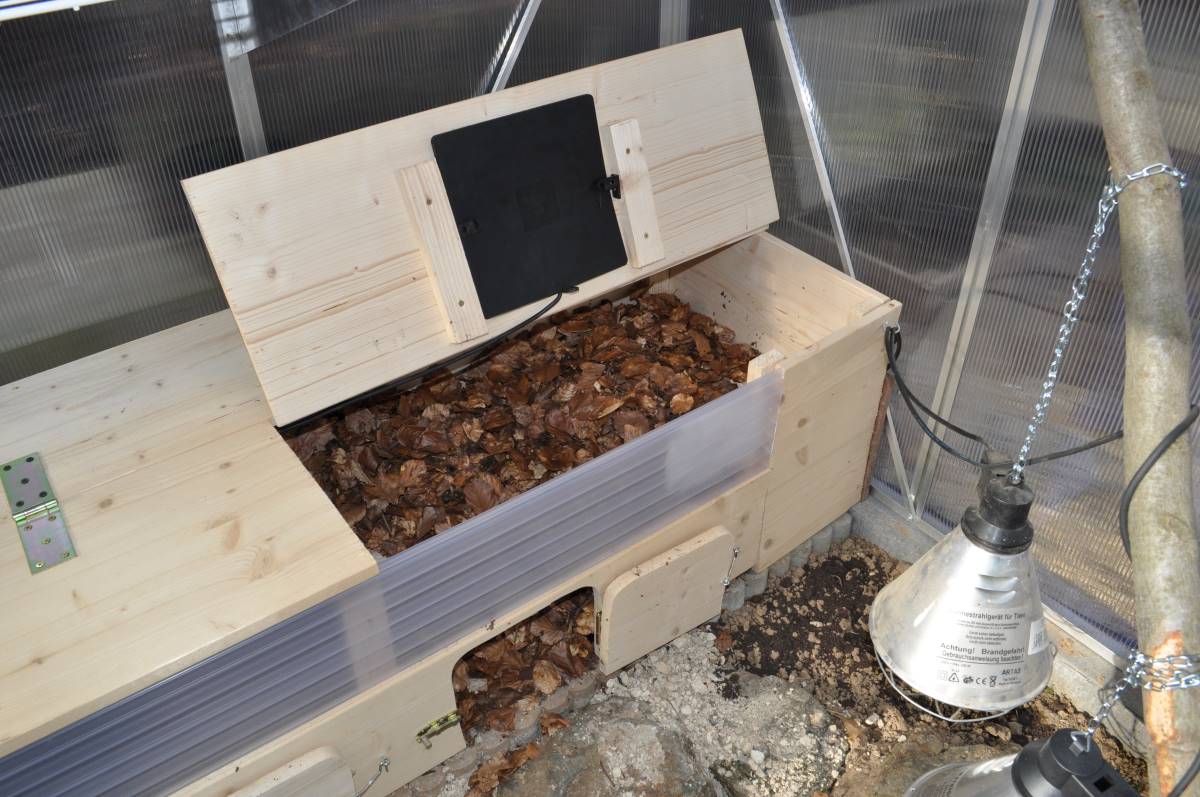Hibernation of Mediterranean Tortoises

In order to survive periods of unsuitable temperatures, land tortoises from European countries such as Greece, France, Italy and Bulgaria go into hibernation triggered by reduced sunshine, changing lengths of day and night, and ongoing temperatures under 10°C. The winter months are too cold for these ectothermic (cold-blooded) animals to lead an active life in their original habitats as well as in human care. Taking nature as our guide, it is self-evident that these animals have to undergo a hibernation period when they are in our care as well. Mediterranean Tortoises are instinctively led through hormonal changes and by environmental factors such as changes in daylight intensity, day and night temperatures etc. to a species-specific annual rhythm. It is possible to omit the hibernation of the animals in human care, but only with considerable costs and the use of equipment – and it would also be very unnatural for the animal.

An obvious problem comes to mind immediately if tortoises are artificially kept awake during the winter months: there is usually no availability of optimal food, with the exception of weeds raised in good time inside greenhouses or cold frames. However, keepers will often resort to unsuitable food like lettuce or tortoise pellets in order to meet the unnatural demand for food for the animals’ enforced activity phase during the winter months. I know from practical experience that animals which were kept ‘awake’ during the winter – even if only for the first few years – have significant growth problems which cannot be reversed (e.g. bumpy shell growth and fatty organs).
When overwintering tortoises, kept awake inside their keeper’s warm house, are constantly fed, they gain a lot of weight, whereas naturally hibernating animals do not change their weight at all or only insignificantly. Animals that are kept with natural husbandry and, as part of that, can undergo an optimal hibernation, are significantly more active from spring onwards, healthier and clearly more vivacious than tortoises kept awake during winter.
The reason for this vitality is that hibernation provides a regenerative phase for the animals, which has a positive effect on the immune system. Omission or early termination of hibernation is only necessary and justified in exceptional circumstances, e.g. illness, heavy parasite infestations, serious wounds and restlessness during hibernation. The species of Hermann’s tortoises, Marginated tortoises, and Horsfield’s tortoises hibernate in their natural habitats. But keepers of Spur-thighed tortoises must consider from which area their animals (or their parents) originate from due to the large distribution range of this species. For example, the subspecies Testudo graeca ibera (with original habitats in Greece, Bulgaria and Türkiye – formerly Turkey) hibernate during the cool winter months. But to try to hibernate a Spur-thighed tortoise from Tunisia (Testudo graeca nabeulensis) in our regions would be highly dangerous because these animals would only have a reduced activity phase in their area of origin.
Hibernation timeline:
“Tortoise check”
by the keeper or vet
Preparation
phase
Hibernation
phase
Waking
phase
Activity





